Moammar Gadhafi, the overthrown Libyan leader, took over news stations Thursday with news that he had died from a bullet to the head. The Boston Globe used social media to update the status of this breaking news.By using all-capital status markers such as BREAKING NEWS and UPDATE, The Globe effectively drew attention to their tweets in a crowded news feed. I first heard news of Gadhafi's death through Twitter (@BostonGlobe). I was instantly drawn to The Globe's updates. They were succinct, but provided all necessary information. Their tweets were frequent, but not overwhelming.Overall, The Boston Globe used social media to their advantage to bring readers in and provide up-to-date coverage on this world news story.
A true technological visionary, Steve Jobs, co-founder and former CEO of Apple and creator of Pixar Animation, died yesterday at the age of 52. The Boston Globe heralded Jobs as one of this millennium's greatest innovators and inventors. The man who brought us Apple as we know it is gone.Jobs changed the world and technology forever. The iPhone broke foundries and brought Jobs's motto "Think Different" to life. Before this phone was unveiled, cellphones were thought of as purely mobile phones – texting and email were still fancy features.In The Boston Globe's Arts section, Wesley Morris explored why Jobs was so successful: he made technology less scary. In this story, Morris said, "Jobs removed the fear and essentially hid the computer: the iPod (computer as record crate), the MacBook (computer as personal office), the iPhone (computer as lifeline), the iPad (computer as, well, we’re still figuring that out)." Morris contrasted the public love of Steve Jobs with the current backlash against other CEOs in the "occupy Wall-Street" protests. Morris said Jobs was loved because he always seemed to be working for the people. Whether a "PC" or a "Mac," the world mourned the loss of Jobs, who has suffered from Pancreatic cancer and stepped down as CEO in August in part due to his deteriorating health.The public took to Twitter and Facebook to give condolences and celebrate Jobs's life. The fact that I first read about Jobs' death on my iPhone and then blogged about it on my MacBook Pro is a testament to his legacy. In addition to a headlined obituary, The Globe featured a photo timeline of Job's major inventions, both successes and failures – and that was only the first day of coverage.In the past days after his death, The Boston Globe has covered numerous stories related to Jobs: a health and wellness story on pancreatic cancer and Jobs, a photo slideshow of Boston tributes and letters to the editor about Jobs just to name a few.A photo slideshow commemorates Jobs's influence on pop culture. He brought us Pixar and the Mac. He told us to "Think Different," and although I cringe at his grammar, I know he changed the future of technology with those two words. While other companies were still looking into making phones with keyboards, Jobs was creating the iPhone – a device that has changed my life. In his 2005 commencement speech at Stanford, Jobs addressed the graduates about his unlikely path to success. He said: "Stay hungry. Stay foolish." Jobs was born out of wedlock, given up for adoption, dropped out of college and fired from the company he started, yet he still managed to change the world.
September is over. And so is my free use of The Boston Globe's new website. I must resort to using its free counterpart – the old model littered with advertisements. Today provides a new annoyance. Animated leaves sprinkle the screen and fall across the page in homage to the autumn season.Although I am not happy with this outdated site, I must commend The Boston Globe for its use of photo galleries in both news and sport stories. Today's top story, rain waters flood North Shore towns, featured two photo galleries – one professional and one of user-generated content.The site also features a special photo gallery on the 2011 Topsfield Fair. This use of photos gives The Boston Globe readers a sense of community.Another photo gallery focuses on the Boston Red Sox, and what players will need to change in order to create a more successful team for next year. These photos use personality portraits and emotion to capture the players instead of the typical baseball action shot. I was surprised by The Boston Globe's use of photography on its free site.
It's a sad day in Boston. The Red Sox blew their chance at the playoffs, and The Boston Globe provided very few Twitter updates from the game, although they have an account dedicated to the team ( @GlobeSox). The updates were short and informative – which I liked – but in such a crucial game, I would have appreciated more updates and interaction with followers. The use of hashtags was also confusing. Which one were they trying to trend – #redsox or #pulseredsox? After searching these trends it seems like many friends were using social media to discuss the game and read updates. The Boston Globe missed an opportunity to gain followers using digital journalism. One word came to mind when looking at The Globe's Facebook page – boring. It doesn't engage the readers. They post about two story links a day, and these posts are lucky to get five comments. Sad. If The Boston Globe wants to stay prevalent in the age of digital journalism, it must adapt to the world of social media.
The Boston Globe followed up on a story about a toddler who died at 17 months after he was left in a daycare's transport van. Today's story and photo gallery focused on the mother of the boy. More than 100 people came to support her at last night's vigil. John M. Guilfoil, the reporter for the story, "wrote for the ear," as my class learned in The Poynter Institute's NewsU online course. Guilfoil used quotes by Virginie Cazir, the mother of the boy, which would have made for great sound-bites. The story read easily and could have been transformed into a audio program. “I’ve been strong because if I’m not strong for him, who’s going to be strong for him? I could be not strong later, but now it’s all about him,’’ Cazir said. “I want you all to take this moment and cherish the children, because I had no time to say goodbye to mine," Guilfoil wrote. He wrote descriptively in short and concise sentences that gave the reader a vision of the scene at the vigil."Cazir spoke after two city pastors led the group in song. Tears streamed down both sides of her face, but her voice never wavered," he wrote. After a moment of silence an a balloon release, Cazir asked the crowd to join her in singing the theme song to Spongebob Squarepants, her son's favorite show. “SpongeBob SquarePants, SpongeBob SquarePants, SpongeBob . . . .’’ Guilfoil wrote, finishing his story. This story was written much like an audio story would have been. Because Guilfoil wrote for the ear, his story has much more impact .
The day of the New England Patriot's season opener versus the Miami Dolphins, a division rival, The Boston Globe launched a new site – for a price. The new homepage is clean, interactive and professional. But beauty comes with a price tag. This new site is free for the month of Sept., but after that it will require a paid subscription. Boston.com will remain free, but with limited content – only five full news stories After last night's victory, the game coverage was featured on both sites. The story was descriptive and accurate, providing clear explanations of the game's highlights. It also featured a video of Tom Brady's post-game press conference. The analysis seemed to be slightly biased in favor of the Patriot's, but this content is for Bostonian readers.The story also did a great job of highlighting the importance of Brady's record night and how it played a role in the victory.Today The Boston Globe did more in-depth coverage and updated from last nights breaking news. A feature on Wes Welker refocused the coverage from one star player (Brady) to other contributing members of the team.
The Boston Globe gave tribute to 9/11 all over its website. They commemorated the anniversary by changing their nameplate, featuring a rose and an American flag background. The patriotic feel continued throughout the homepage. They used a red, white and blue color scheme. Brian McGrory's ten-page feature "Up from the ashes" was linked directly below an illustration of New York City's skyline, pre-9/11, still containing the Twin Towers the day of the. I think Boston.com did a great job of covering the attacks, and giving the anniversary a local feel. These stories could not have been from any city. They were about Boston. One feature focused on the workers at Boston's Logan International Airport, where two of the planes left from on Sept. 11, 2001. While other news centers focused on New York, The Boston Globe focused on its readers and provided information relative to them. They can relate to the airport workers. They could have been their neighbors. This story also features a gripping video – "Departure Point."Another video summarizes the importance of this anniversary as a preview to future content. On Sept. 11, 2011, Boston.com featured a live video feed of the memorial service from New York. The last in an eight-part 9/11 series, this 10-page story on remembrances of the attacks, truly aims for the heart, as Al Tompkins describes in Aim for the Heart, his book on multimedia reporting.McGrory concludes this series by telling the stories of those lost and those who continue to remember them. They are done mourning, but they do not forget their loved ones.He introduces his text by beginning with a video – "Where were you?" By doing this, McGrory creates a package, perfectly reflective of the 10th anniversary of 9/11. The readers will remember how this digital journalism made them feel. The Boston Globe also did not forget the attacks after the anniversary passed. Days later, coverage of the memorial could still be easily found on their homepage. The day after the memorial service was featured live on the site, a story appeared focused on the new memorial site.Today, two days after the anniversary, The Boston Globe updated its site with another 9/11 piece, focusing on how New York will continue to move on.I was impressed with The Boston Globe's in-depth coverage and use of multimedia.
Where should I look? The Boston Globe's website is so disorganized and busy that it distracts the reader. Advertisements clutter the already overcrowded landscape of the website. The large amount of content is impressive, but having every story on the home page is intimidating. Categories are featured on the top and bottom of the page, but they do not seemed to be utilized correctly. The page is also very unorganized. The top sports story sits next to a news story, above a picture of a tattoo convention. I can barely tell what story is connected to what graphic. The design also makes it hard to tell what is an advertisement, and what is a graphic. The Boston Globe's website has more ads than video and pictures. I read multiple stories that were great reads, but not one had a pictures, graphics, audio, or video. This website comes off more as a commercial site than a news site. I feel like they are trying to sell me products, not tell me the news. They have sections such as "featured job," "weekly ads," and " today's deal." It does not feel professional. I did like the "Hot Topics" bar featured at the top of the screen. It was the only way to have some look into what the big stories of the day were, instead of searching through the site in hopes of picking them out of the mess. I also appreciated how quickly the site was updated. Late last night Triple homicide in Lawrence had less information, and today it reads Mother, 2 teenagers killed in Lawrence and has a photo of mourners. Better organization, a focus on multimedia content, and less advertisements would bring Boston.com more online readers and a finished look. Currently, too much information on the home page makes
I have no past blogging experience, but I will be blogging weekly about my beat for this course, The Boston Globe. I think blogging and creating an online brand as a professional journalist will be necessary for my future success. Journalism is changing. Mobile and online news are quickly reinventing and reconstructing the roles of journalism.I hope to learn more about digital journalism, especially audio and photography, this semester. As a news reporter for The Marquette Tribune, I hope these exercises improve my writing skills and familiarize me with internet journalism.As a native Chicagoan (Yes, the "real city," not the suburbs.), I hope to return to the greatest city in the world after my stint in Wisconsin, but Boston would be a great city to visit. I have only been to this city once five years ago (I was 15.), but its large Irish population and historic ballpark (Fenway) peak my interests. Follow me on Twitter.
|
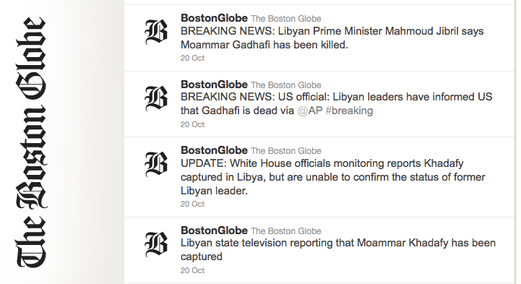
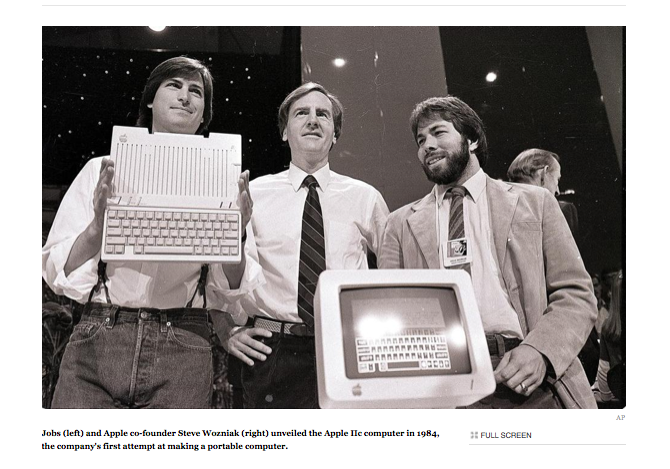

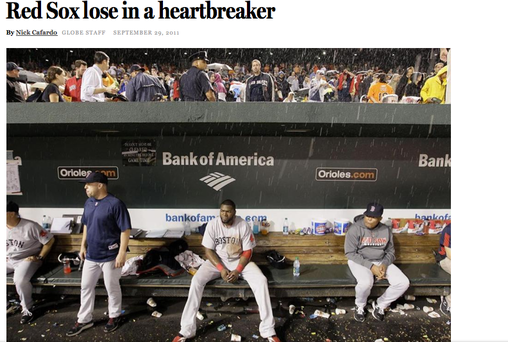

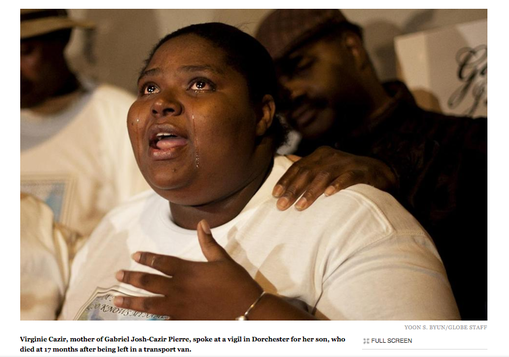

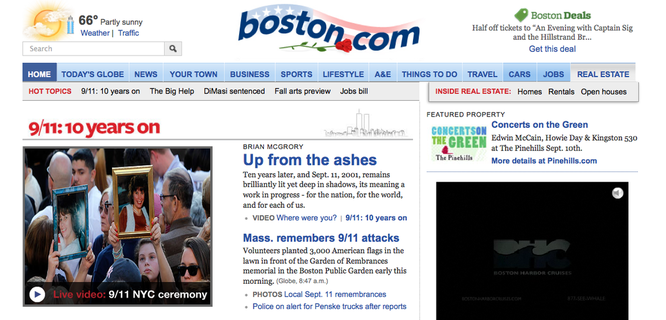

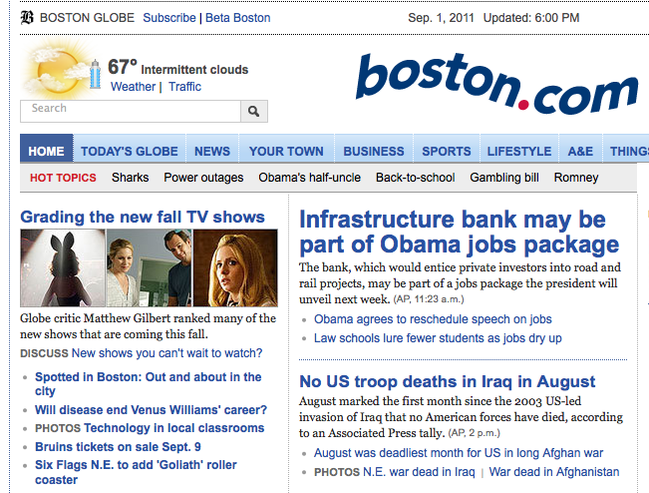

 RSS Feed
RSS Feed